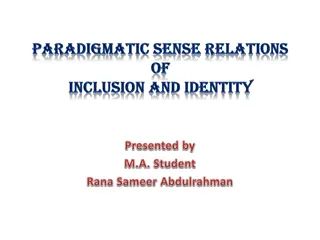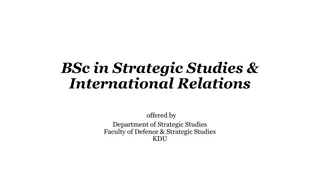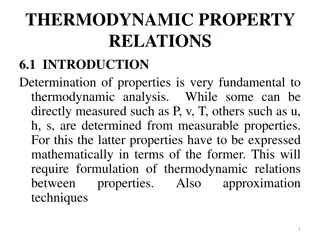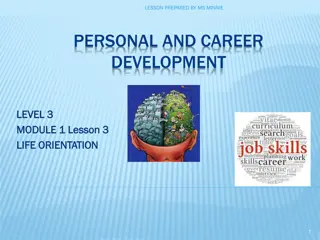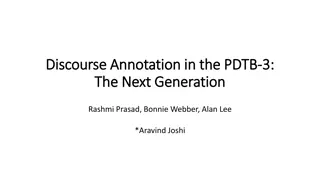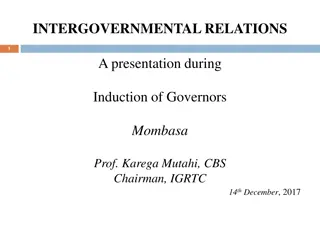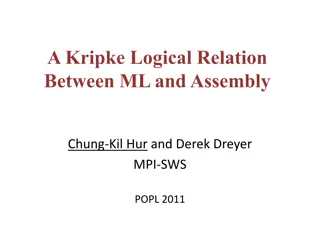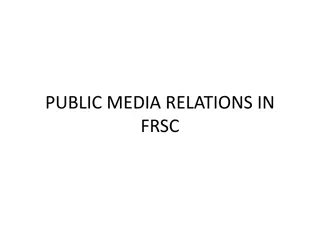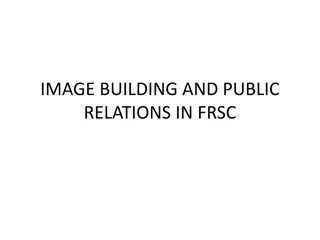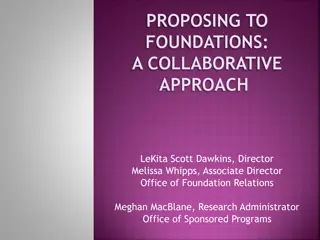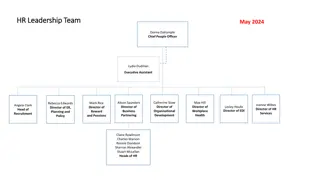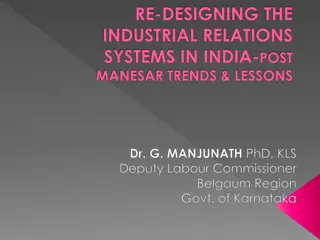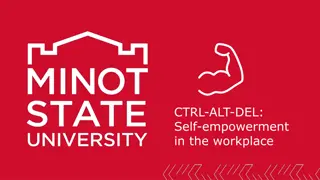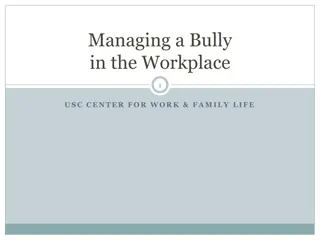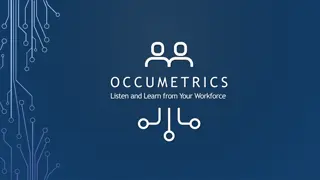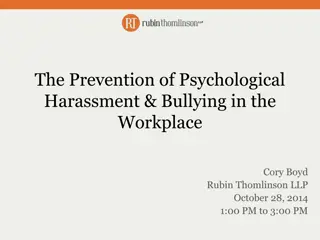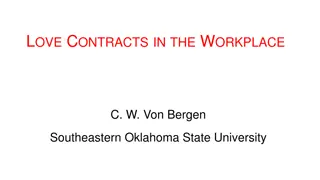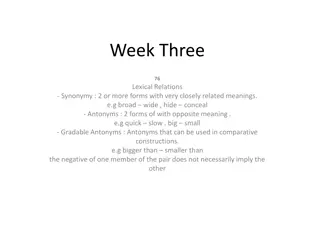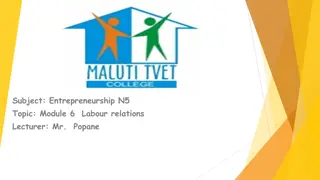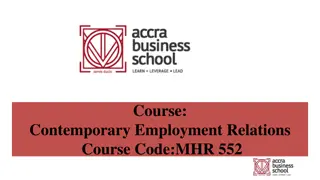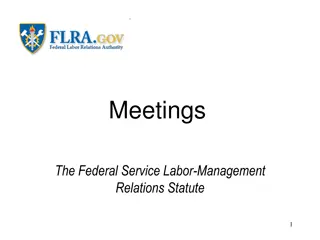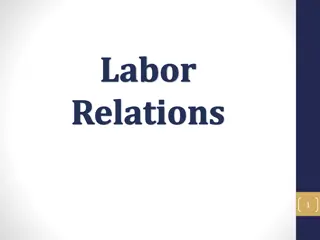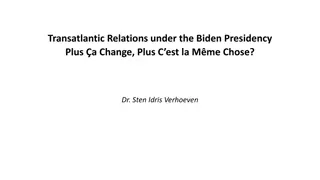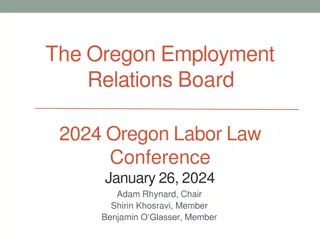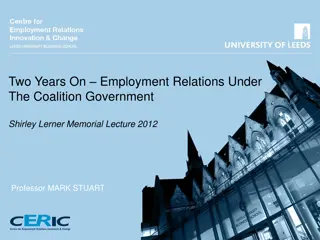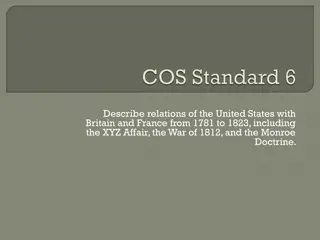Understanding Human Relations in the Workplace
Human relations in the workplace involve motivating employees, utilizing techniques like counseling and good leadership, and fostering cooperation and commitment. It encompasses various disciplines like management, psychology, and sociology. Effective human relations lead to improved job satisfaction, reduced grievances, and increased productivity. Vroom's Expectancy Theory of Motivation and different leadership styles play crucial roles in shaping employee behavior and performance.
Download Presentation

Please find below an Image/Link to download the presentation.
The content on the website is provided AS IS for your information and personal use only. It may not be sold, licensed, or shared on other websites without obtaining consent from the author. Download presentation by click this link. If you encounter any issues during the download, it is possible that the publisher has removed the file from their server.
E N D
Presentation Transcript
HUMAN RELATIONS RELATION WITH OR BETWEEN PEOPLE IN WORKPLACE. FEATURES 1. PROCESS OF MOTIVATING THE EMPLOYEES 2. UNIVERSAL SUBJECT
HUMAN RELATIONS - FEATURES 3. CONTINUOUS ACTVITY 4. TECHNIQUES ARE COUNSELLING, EMPLOYEE PARTICIPATION, GOOD LEADERSHIP ETC. 5. CO-OPERATION AND COMMITMENT FROM EMPLOYEES. 6. MULTI -DISCIPLINARY INCLUDES MGT, PSYCHOLOGY, SOCIOLOGY, BUSINESS COMMUNICATION, ECONOMICS ETC. 7. ALL PERVASIVE.
FEATURES OF HUMAN RELATIONS. 8. FOCUS AREAS OF FOCUS INCLUDES EMPLOYEE SATISFACTION & WELFARE . THEREFORE SCOPE IS WIDE. 9. AIMS AT JOB SATISFACTION 10. EMPLOYEE WELFARE & TRAINING & DEVELOPMENT
STYLES LEADERSHIP AN ACTIVITY OF INFLUENCING PEOPLE TO STRIVE WILLINGLY FOR GROUP OBJECTIVES. STYLES AUTOCRATIC, DEMOCRATIC, BUREAUCRATIC , NEUROCRATIC( EMOTIONAL) PATERNALISTIC, LAISSEZ FAIRE AND SITUATIONAL AND CONSULTATIVE
IMPORTANCE OF HUMAN RELATIONS 1. MOTIVATION & PRODUCTIVITY 2. UNDERSTANDING HUMAN BEHAVIOUR 3. OPTIMUM UTILISATION 4. CREATIVITY 5. JOBSATISFACTION 6. REDUCTION IN GRIEVANCES 7. CORDIAL RELATIONS
Vrooms Expectancy Theory of Motivation In 1964, Canadian professor of psychology Victor Vroom developed the Expectancy Theory. In this theory he studied people s motivation and concluded it depends on three factors: Expectancy, instrumentality and valence. Whereas Maslow and Herzberg look at the relationship between internal needs and the resulting effort expended to fulfil them, Vroom's expectancy theory separates effort (which arises from motivation), performance, and outcomes.
VROOMS EXPECTANCY THEORY ASSUMPTIONS 1. MOTIVATION IS DETERMINED BY THE NATURE OF THE REWARD. 2. HR EXPECT REWARD FOR THEIR PERFOEMANCES. 3. BEHAVIOUR OF AN EMPLOYEE IS A RESULT OF HIS CONSCIOUS CHOICE. 4. . THE CHOICE IS BASED ON MAXIMISING HIS PLEASURE
Vroom's expectancy theory assumes that behavior results from conscious choices among alternatives whose purpose it is to maximize pleasure and to minimize pain. Vroom realized that an employee's performance is based on individual factors such as personality, skills, knowledge, experience and abilities. He stated that effort, performance and motivation are linked in a person's motivation. He uses the variables Expectancy, Instrumentality and Valence to account for this. Expectancy is the belief that increased effort will lead to increased performance i.e. if I work harder then this will be better. This is affected by such things as: 1.Having the right resources available (e.g. raw materials, time) 2.Having the right skills to do the job 3.Having the necessary support to get the job done (e.g. supervisor support, or correct information on the job)
Factors-------- Instrumentality is the belief that if you perform well that a valued outcome will be received. The degree to which a first level outcome will lead to the second level outcome. i.e. if I do a good job, there is something in it for me. This is also known as performance reward probability.This is affected by such things as: 1.Clear understanding of the relationship between performance and outcomes e.g. the rules of the reward 'game' 2.Trust in the people who will take the decisions on who gets what outcome 3.Transparency of the process that decides who gets what outcome .
Factors----- Valence is the importance that the individual places upon the expected outcome. For the valence to be positive, the person must prefer attaining the outcome to not attaining it. For example, if someone is mainly motivated by money, he or she might not value offers of additional time off. The three elements are important behind choosing one element over another because they are clearly defined: effort-performance expectancy (E>P expectancy) and performance-outcome expectancy (P>O expectancy). E>P expectancy: our assessment of the probability that our efforts will lead to the required performance level. P>O expectancy: our assessment of the probability that our successful performance will lead to certain outcomes.
implications The implication of Vroom's expectancy theory is that people change their level of effort according to the value they place on the bonus they receive from the process and on their perception of the strength of the links between effort and outcome. So, if someone perceives that any one of these is true: 1.My increased effort will not increase my performance 2.My increased performance will not increase my rewards 3.I don't value the rewards on offer ...then Vroom's expectancy theory suggests that this individual will not be motivated. This means that even if an organisation achieves two out of three, that employees would still not be motivated, all three are required for positive motivation.
THEORY X EMPLOYEES ARE LAZY THEORYY MOTIVATED TO TAKE UP RESPONSIBILITIES EMPLOYEES ARE MOTIVATED THROUGH MONETARY AND NON MONETARY INCENTIVES INTIATIVES BY THE INDIVIDUALS NO SUPERVSION MOTIVATED ONLY MONETARY INCENTIVES NO INTIATIVE SUPERVISION IS REQUIRED
DOESNOT WANT TO TAKE CHALLENGES CREATIVITY IS NOT SHOWN EMPLOYEES LACK MOTIVATION SINCE NOT MOTIVATED,REWARDAND PUNISHMENTS BOTH EXPECTED NOT AMBITIOUS AND NOT HARDWORKING GUIDELINESARE TO BE SUPERIORS INTERESTED IN TAKING CHALLENGES ALWAYS CREATIVITY IS SHOWN ALWAYS MOTIVATED ONLY REWARDS ARE EXPECTED SINCE SELF MOTIVATED. AMBITIOUS AND HARDWORKING NO GUIDELINES ARE TO BE GIVEN
THEORY X ASSUMES CENTRALISED ADMINISTRATION ATTITUDE OF EMPLOYEES TOWARDS WORK IS NEGATIVE. THEY DISLIKE WORK SOLUTIONS FOR PROBLEMS ARE TO BE GIVEN BY THE SUPERIORS MANAGERS ARE PESSIMISTIC HAVING NEGATIVE OPINION ABOUT SUBORDINATES LEADERSHIP STYLEWILL BE AUTOCRATIC DELEGATION OF AUTHORITY SINCE INITIATIVES ARE TAKEN EMPLOYEES ARE MOTIVATED TO TAKE WORK AS PLEASURE SOLVE ALL PROBLEMS CREATIVELY MANGERS HAVE POSITIVE OPINION AND ARE OPTIMISTIC PARTICIPATIVE STYLE OF LEADERSHIP



